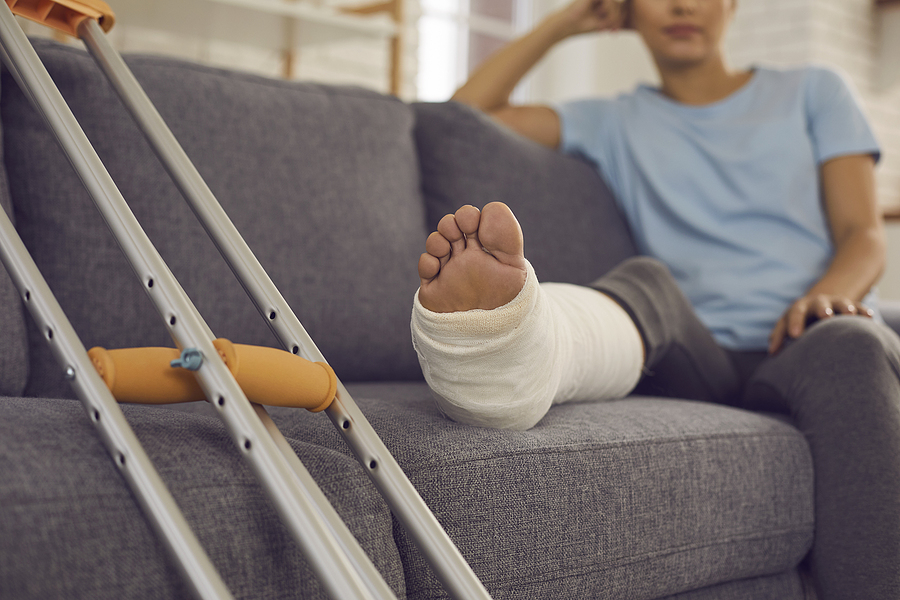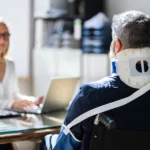Summary
- Broken bones and fractures, referring to a “loss of continuity of the bone,” can result from various accidents, including motor vehicle, slip and falls, and workplace incidents, often leading to complex cases with significant medical expenses.
- Common fracture types include stable, compound, transverse, oblique, comminuted, and complicated fractures, varying in severity and impact on surrounding tissues.
- Filing a successful claim involves proving damages, which can be challenging against stringent insurance companies; experienced attorneys can strengthen the case with evidence and expert witnesses.
- Compensation for fracture injuries can cover a range of damages, including medical bills, lost wages, pain and suffering, and long-term effects like nerve damage and mental health issues.
Table of Contents
Did you know that broken bones and fractures are actually the same injury? Both terms are used to refer to a “loss of continuity of the bone.” Sometimes, they may refer to differences in severity. Whether you call it a broken bone or a fracture, the personal injury lawyers at Werner, Hoffman, Greig & Garcia can help you receive compensation if someone else’s negligence caused it.
Motor vehicle accidents, slip and falls, and workplace accidents can all cause bone fractures. Contrary to popular belief, these types of injuries are not always minor. In fact, they can be complex, resulting in multiple surgeries and high medical bills.
A complex lawsuit should only be placed in the hands of an experienced broken bone and fracture lawyer. If you have a broken bone as a result of a personal injury accident, our team is here to help you. Call today at (800) 320-HELP or contact us online to schedule a free case evaluation.
Types of Broken Bone and Fracture Injuries
There are a variety of different types of fractures that can occur in the upper and lower extremities, as well as in other bones, like clavicles and ribs. Because bones are rigid, when a great outward force is applied, they can crack, break, or even shatter. Common types of fractures include:
- Stable fracture: A simple, clean fracture where the bone is barely out of place. These are sometimes also called simple or closed fractures.
- Compound fracture: In a compound fracture, the bone may pierce the skin, or the skin may be otherwise opened by impact. The bone may or may not be visible beneath the skin. These fractures are also sometimes called open fractures.
- Transverse fracture: The fracture line is horizontal.
- Oblique fracture: The fracture line is angled.
- Comminuted fracture: Not a clean fracture. The bone may have shattered into three or more pieces. There are often multiple small fractures or small pieces of broken bone as a result of a great impact.
- Complicated fracture: Nearby veins, arteries, and nerves may be damaged as a result of the fracture.
Many of these type identifiers can be combined. For example, a fracture is often stable or compound, as well as transverse or oblique.

Types of Personal Injury Accidents that Cause Fractures
As previously stated, a fracture can occur whenever a bone is struck by great force. This impact could come from the following types of personal injury accidents:
- Car and truck accidents: The force of another vehicle hitting your car is enough to break bones. Oftentimes, in motor vehicle accidents, victims will have multiple breaks.
- Pedestrian and bicycle accidents: Pedestrians and bicyclists parties are much more vulnerable than other road users and, therefore, often experience more severe injuries. However, broken bones are still common, though they may occur alongside more serious injuries depending on the crash.
- Slip and fall accidents: Broken bones aren’t as common in slips and falls, but they do occur. Potholes and broken stairs may result in broken bones in the leg, while falling on a hard surface can result in breaks to bones in the arms.
- Workplace injuries: Broken bones may occur in the workplace, especially in the event of machinery accidents, falls from heights, crushing injuries, and more. Broken bones or fractures are one of many types of injuries common in workplaces; our lawyers can review your case and help you get the compensation you need to recover from your injuries.
Filing a Successful Claim Against the At-Fault Party
The main purpose of filing a claim is to receive compensation for any “damages” in your case. The term “damages” refers to any losses you’ve experienced as a result of the accident. This can include monetary losses like medical bills and abstract costs like pain and suffering.
To receive this compensation, you must file a claim against the at-fault party’s insurance company. Unfortunately, insurance companies are particularly stringent, and they don’t like to give out very much money.
Oftentimes, without an attorney, your claim will result in a low settlement offer or an outright denial. An experienced personal injury attorney can make sure that your claim is ironclad and undeniable. They’ll do so by using their years of experience and their resources to gather evidence, hire expert witnesses, and more.
Recovering Damages After a Broken Bone or Bone Fracture Injury
Bone fractures can be costly injuries. Not only will you need to pay for an initial medical examination, but you may also need other medical treatment, such as surgery and physical therapy.
You may also be left with permanent damage to the nerves, decreased strength, joint problems, and mental health issues as a result of your injury.
You may be able to receive compensation for the following damages:
- Past and future medical bills
- Past and future lost wages
- Lost earning capacity
- Pain and suffering
- Disfigurement and scarring
- And more
The Lawyers at Werner, Hoffman, Greig & Garcia can Help you With Your Broken Bone Injury Claim
Our team of experienced personal injury lawyers have hands-on experience working with and winning broken bone and fracture cases. We’re here to help you get the settlement offer you deserve. Give us a call anytime at (800) 320-HELP to set up an evaluation of your case. You can also fill out our online contact form, and we’ll give you a call.
FAQs
What are the first steps to take after a fracture injury?
After a bone break or fracture injury, immediately seek medical attention. If you can, document your injury and, if necessary, exchange insurance and/or contact information with the other involved parties. Once you’ve received treatment for your broken bone, you should contact an attorney to discuss your case and to determine what remedies are available to you.
How is compensation calculated for a broken bone case?
Compensation is calculated based on the damages you’ve incurred as a result of your injury. An experienced attorney will be able to give you an accurate estimate of what you should expect from your settlement based on your broken bone injuries, medical bills, and other damages.
Can I still file a claim if the injury was my fault?
In some states, you may be able to file a personal injury claim even if the accident was partially or completely your fault. However, it depends on a variety of factors, such as the type of accident and your available insurance coverage. Because of the many variables involved, it’s best to consult with an experienced broken bone injury lawyer to understand your rights.
How does the firm’s fee structure work for fracture cases?
Werner, Hoffman, Greig & Garcia works on a contingency fee basis for personal injury cases. This means that we won’t receive any money until you do. Once we settle your case or win at trial, we’ll take a percentage of your compensation as a contingency fee.
Let WHG Get You The Compensation You Need!
Give us a call. We are available 24/7.











